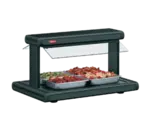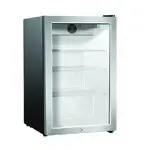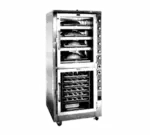
Ghost Kitchen: Virtual Restaurant 101
- What is a Virtual Restaurant?
- Benefits of a Ghost Kitchen
- Types of Virtual Restaurants
- Develop a Business Plan
- Choose The Right Concept for You
- Set Up the Virtual Restaurant
- Restaurant Regulations and Licenses
- Create Your Brand
- Find the Right Equipment
- Build a Website with Online Menu
- Promote Your Ghost Kitchen
- Conclusion
Ghost kitchens are the latest trend in the restaurant industry, allowing restaurants to boost their reach and provide customers with unique and delicious meals without physical dining spaces. For many entrepreneurs, ghost kitchens are a cost-effective way to increase revenue without investing in expensive real estate or equipment.
This guide will provide an overview of starting a successful ghost kitchen, outlining the advantages and disadvantages, developing winning concepts, and strategies for marketing the restaurant business.
What is a Virtual Restaurant?
Unlike traditional restaurants, virtual restaurants are run exclusively online, where customers order their meals via third-party delivery services such as DoorDash, UberEats, or other platforms. They often specialize in one cuisine, making them ideal for those looking for a specific dish but don’t want to spend hours searching through dozens of menus.
Benefits of a Ghost Kitchen
Ghost kitchens offer many benefits to restaurant owners and customers alike. Not only do they benefit entrepreneurs looking to open a restaurant business, but they also provide convenience and affordability for customers who might not have the budget or time to dine out.
Cost Efficiency
Ghost kitchens offer significant cost savings compared to traditional restaurants as they eliminate the need for a physical dining space, reducing rent, utilities, and decor expenses. This allows businesses to experiment with new dishes and concepts while saving on the overhead costs of investing in a physical location.
Flexibility and Scalability
Ghost kitchens provide a flexible and scalable model, allowing businesses to easily adapt to changing customer demands and market trends. They can quickly adjust menus, experiment with new concepts, and expand into multiple locations without the constraints of a physical restaurant.
Increased Reach and Delivery Focus
Ghost kitchen businesses can tap into a wider customer base by focusing primarily on delivery and takeout orders without worrying about staffing front-of-house staff or maintaining a dining room. By partnering with popular food delivery platforms, they can reach more customers and capitalize on the growing demand for convenient food delivery services.
Operational Efficiency
Ghost kitchens streamline operations by eliminating the complexities of managing a full-service restaurant. With a simplified business model, owners can optimize their production processes, ensure consistent quality, and enhance overall food preparation and delivery efficiency.
Types of Virtual Restaurants
Different types of virtual restaurants cater to different customer needs, and each type has its own set of advantages.

Delivery-Only Restaurants
Also known as ghost or dark kitchens, these restaurants operate solely for delivery and takeout orders. They do not offer a physical dining space and focus on preparing food specifically for delivery, partnering with third-party delivery platforms.

Virtual Brands
Virtual brands are exclusively online restaurant concepts operating within brick-and-mortar or ghost kitchens. These brands offer a separate menu or cuisine from the physical restaurant and target a different customer base, leveraging the existing infrastructure to fulfill delivery orders.

Commissary Kitchens
Commissary kitchens provide commercial kitchen space, equipment, and other resources to food businesses that cannot invest in a full-scale commercial kitchen. Caterers, restaurants, or food truck operators often use them. With commissary kitchens, businesses can benefit from shared resources and economies of scale to reduce business operations costs.

Cloud Kitchens
Unlike traditional restaurants, cloud kitchens do not have a physical location. Instead, they operate from single or multiple kitchens in various locations to optimize their space and resources. They offer convenience and flexibility to restaurant owners by allowing them to set up kitchens anywhere without worrying about the associated infrastructure costs such as rent or renovation.

Pop-Up Restaurants
Pop-up restaurants are temporary dining experiences that can operate virtually. They often appear for a limited time or in specific locations, showcasing unique culinary concepts or collaborations. Pop-up restaurants can operate solely for delivery or offer a combination of dine-in and delivery options.
How to Open a Virtual Restaurant
Are you ready to take your culinary skills to the next level with a virtual restaurant? With so many options and opportunities available, it can be overwhelming to know where to start. Fortunately, you can take some simple steps to open your virtual restaurant successfully.

Develop a Business Plan
A successful virtual restaurant requires more than just food; it needs a well-crafted business plan that outlines the logistics of operating in the digital space. Generally, this includes researching the competitive landscape, developing an effective pricing strategy, creating marketing plans to attract customers, and building operational systems to ensure customer satisfaction.
Choose The Right Concept for You
The right concept should be based on understanding customer needs and preferences, considering factors such as location and target market. With market research and data analysis, aspiring owners can narrow their choices and decide what concept will work best.
Set Up the Virtual Restaurant
Consider the staffing requirements, menu design, and food delivery options. These factors will ensure the virtual restaurant runs smoothly and efficiently while delivering high-quality food to customers.
- Staffing: Hire experienced chefs who can handle the unique challenges of running a virtual kitchen and have enough staff members to accommodate any sudden spikes in orders or customer requests.
- Operations: Outline the process from order fulfillment to the delivery process. Make sure to include all steps in between, such as menu creation, ordering system setup, and customer communication plans.
- Delivery: Look into different delivery services that efficiently get food from point A to point B quickly and safely while charging competitive prices.
Restaurant Regulations and Licenses
Regulations and licenses ensure food and kitchen safety for customers, employees, and the public by enforcing health standards, preventing public nuisance, and ensuring proper tax collection. To legally run your restaurant, understand legal requirements and restrictions around food safety, health codes, taxes, and other government regulations in the local area.
Create Your Brand
Build an identity that stands out from the competition and reflects the unique qualities of the restaurant. This includes deciding on a name, logo, colors, and tagline to make it easier for potential customers to recognize the establishment. Ensure to incorporate branding elements into all marketing materials to create a consistent feel.
Find the Right Equipment
This includes everything from basic cooking tools like pots and pans to refrigerators and high-tech ovens. For instance, researching the types of equipment that fit the budget and reviews from other users can help owners decide when purchasing for the restaurant.
Build a Website with Online Menu
Researching the latest web design trends, technology tools for website setup, and customer feedback surveys can all create a digital presence that captures the restaurant’s essence. Ideally, the website should be user-friendly, aesthetically pleasing, and optimized for search engine visibility. Research menu design options for the online menu, such as pricing structure and ordering system, to ensure a smooth customer experience.
Promote Your Ghost Kitchen
In today’s competitive landscape, a well-thought-out promotion strategy will put your ghost kitchen on the map. Social media, for instance, is highly effective for reaching potential customers in different locations, where owners can create marketing campaigns and targeted ads to get the message out there and create content that builds a connection with the customers. Online ordering platforms also come in handy to increase the restaurant’s visibility.
Conclusion
Ghost kitchens are revolutionizing the restaurant industry and are here to stay! They offer a unique solution for restaurants looking to expand their reach and provide customers with quality meals without investing too much money in physical locations, making them an attractive option for businesses of any size.
Now that you are equipped with the necessary knowledge, why wait? Get out there and start building your dream kitchen today!
FAQ
Is a virtual restaurant profitable?
Yes. Since there is no need to invest in physical infrastructure, virtual restaurants offer a range of advantages, such as lower overhead costs and increased delivery speed. This helps them reduce costs and increase profitability.
How much does it cost to start a ghost kitchen?
Costs differ based on the size and scope of the venture. The typical cost range is between $20,000 and $60,000, with the lower end often serving as an entry point to scale up over time. However, factors such as equipment needs, menu selection, staff requirements, and delivery partnerships will all impact the final budget.
What’s the difference between a ghost kitchen and a traditional restaurant?
Ghost kitchens are a relatively new concept gaining traction in recent years. They are facilities dedicated to preparing food for delivery or takeout orders without any dining space for customers. Traditional restaurants, on the other hand, provide a physical space for customers to dine in and receive table service.
How to start a ghost kitchen from home?
Having the right plan is key. First, understand your local food regulations and find the right equipment for your chosen cuisine. Research the market, find a reliable supplier, set up an effective delivery system, and create promotional campaigns for your products to get started on your ghost kitchen from home.
What is the average size of a ghost kitchen?
Generally speaking, ghost kitchen sizes range from 200-300 square feet depending on how much equipment is needed and how many daily meals they plan to produce.



